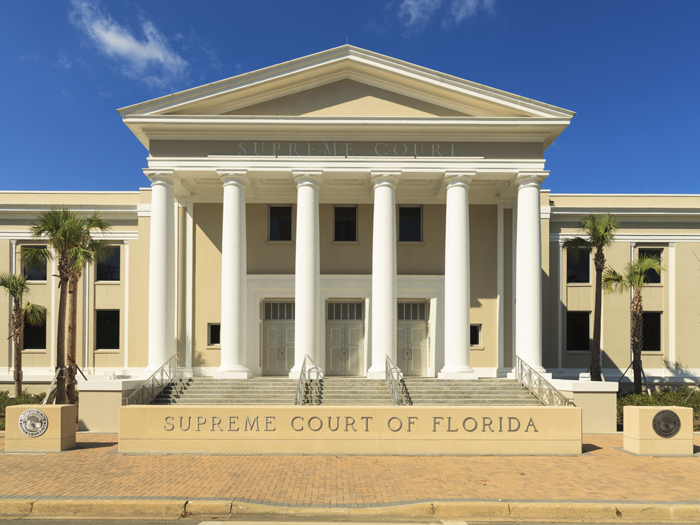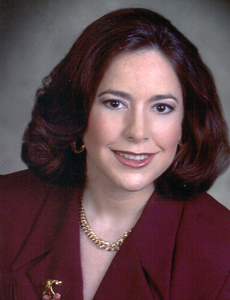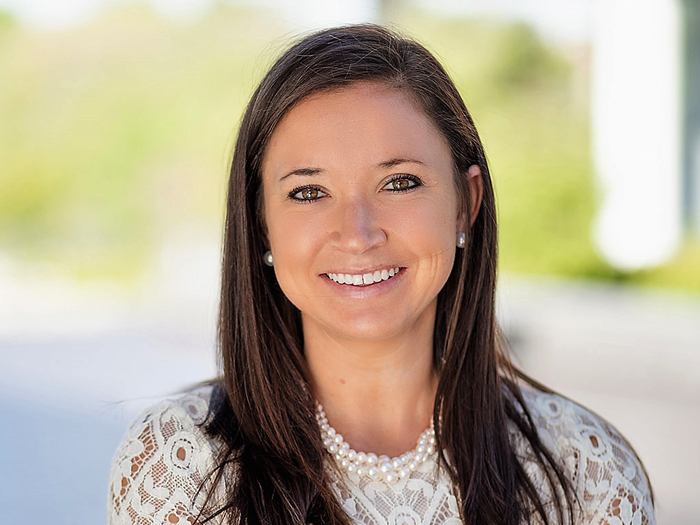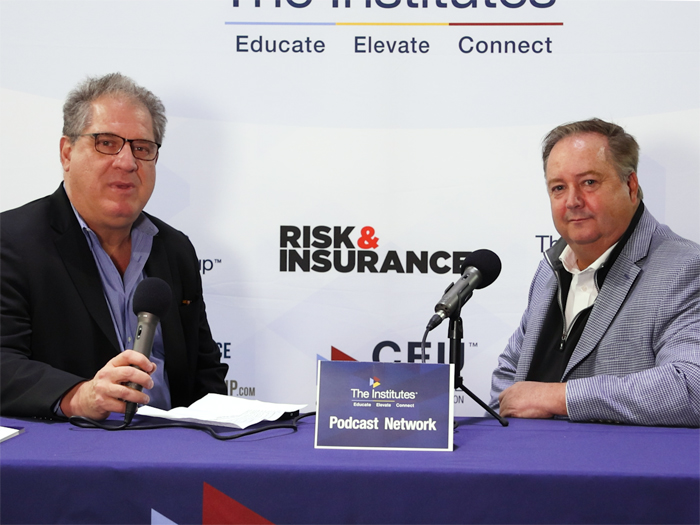COVID, ‘Direct Physical Loss’ and Your Property Policy: Can the Courts Even Figure This Out?

Whether property has suffered “direct physical loss” when it cannot be used for its intended purpose is the first hurdle that most policyholders will face in the 1,500 lawsuits that have been filed regarding property insurance for COVID-19.
It arises because property policies provide coverage separately for loss and for damage, typically through insuring agreements that cover “direct physical loss or damage.”
Courts are tied up in knots analyzing what “loss” means in these insuring agreements, i.e., whether it means something different from “damage,” whether it encompasses impaired functionality, and whether such coverage is necessarily precluded by the fact that economic loss can also be a measure of damages.
So far, most federal courts have found no difference between loss and damage in insuring agreements, dismissing complaints on grounds that the policies unambiguously require structural, visible harm — and there was none.
Many state courts have disagreed. They have either granted summary judgment for policyholders or allowed discovery to proceed into the facts and the policy language.
But is it really so complicated?
Plain Language
Let’s start with the plain language of the policies. In the policies, the words “loss” and “damage” are different. They are separated by an “or.” “Direct physical loss” is covered separately from “damage.” So “direct physical loss” must have an independent meaning.

Rhonda D. Orin, managing partner, Washington, D.C. office, Anderson Kill
The same structure is found in liability policies, although with greater detail.
In the standard-form liability policy released by the insurance industry in 1973, the “or” is reinforced by having the two grounds for coverage — loss and damage — broken out in subsections. Those policies cover liability arising from “property damage,” defined as:
- Physical injury to or destruction of tangible property which occurs during the policy period, including the loss of use thereof at any time resulting therefrom, or
- Loss of use of tangible property which has not been physically injured or destroyed provided such loss of use is caused by an occurrence during the policy period.
This structure was repeated in a streamlined version, released a decade later:
(a) Physical injury to tangible property, including all resulting loss of use of that property; or
(b) Loss of use of tangible property that is not physically injured.
While both versions contain more detail than the insuring agreement in property policies for “direct physical loss or damage,” the ultimate point remains the same. Coverage arises separately from physical damage (subsection one) and from loss of use of the physical premises that is insured (subsection two).
Such provisions also resolve whether loss can both give rise to coverage and be a measure of damages — another question that has troubled courts evaluating COVID-19 claims. In subsection two, loss of use without physical damage is an independent basis for coverage, while in subsection one, loss of use is a form of consequential damages for property that has been physically damaged.
Thus, “loss” can have different meanings and applications within the same policy. No usage precludes any other.
Reasonable Expectations
Does this principle hold in property policies? Businesses affected by COVID-19 shutdowns have a reasonable expectation that it does.
In the 1,500 lawsuits that have been filed, policyholders insist that they expected to be covered if they suddenly were unable to use their property for its ordinary purposes — the purposes for which it was insured. Their expectations arose from whatever variation of “direct physical loss” appeared in their respective policies.

Stephen D. Palley, partner, Washington, D.C. office, Anderson Kill
That reasonable expectation has been eloquently voiced even by property insurance companies — when it suited their interest to do so.
FM Global, one of the nation’s largest property insurers, did policyholders the favor not only of arguing this point but of aggregating cases in which loss of “functionality” was held to constitute “physical loss.”
Seeking in Factory Mutual Insurance Company v. Federal Insurance Company to prove that another insurer owed coverage to its policyholder, FM Global argued to a federal court in New Mexico in 2019 as follows: “It is undisputed that the mold infestation destroyed the aseptic environment and rendered Room 152 unfit for its intended use — manufacturing injectable pharmaceutical products. Numerous courts have concluded that loss of functionality or reliability under similar circumstances constitutes physical loss or damage.”
See, e.g., Western Fire Insurance Co. v. First Presbyterian Church, 437 P.2d 52 (Colo. 1968) (church building sustained physical loss or damage when it was rendered uninhabitable and dangerous due to gasoline under the building); Gregory Packaging, Inc. v. Travelers Property and Casualty Company of America, Civ. No. 2:12-cv-04418 2014 U.S. Dist. LEXIS 165232, 2014 WL 6675934 (D. N.J. 2014) (unsafe levels of ammonia in the air inflicted “direct physical loss of or damage to” the juice packing facility “because the ammonia physically rendered the facility unusable for a period of time.”); Port Authority of N.Y. and N.J. v. Affiliated FM Ins. Co., 311 F.3d 226, 236 (3d Cir. 2002) (asbestos fibers); Essex v. BloomSouth Flooring Corp., 562 F.3d 399, 406 (1st Cir. 2009) (unpleasant odor in home); TRAVCO Ins. Co. v. Ward, 715 437 P.2d at 55 (insured was awarded costs to remediate infiltration and contamination when gasoline rendered church unusable); Farmers Insurance Co. v. Trutanich, 858 P.2d 1332, 1335 (Ore.App. 1993) (costs of rectifying methamphetamine odor covered as direct physical loss or damage.)
FM Global further affirmed policyholders’ understanding that “loss” is different from structural, visible damage: “There being no legal basis to require FM Global to prove demonstrable structural damage or alteration to property or products, evidence or argument in this regard does not involve or establish a controverted fact and should be barred from trial.”
In the COVID-19 wars, even federal courts have so held. A recent example is Kingray Inc. v. Farmers Insurance Co., handed down on March 4, 2021 by a federal court in California. With regard to a nail salon called Nora’s, the Court in Kingray found the question simple: “At various points during the pandemic, Nora’s was forced to shutter, rendering its property unusable for its only purpose— the operation of a business. If Plaintiff was not allowed to operate or invite others onto its property, it was dispossessed in some way. Dispossession is a form of loss.”
That court found support in California precedent establishing coverage under property policies for homes that slid down cliffs yet were not “damaged”: “A landslide pushed the insured home off a steep cliff, moving it, but the house was undamaged. The California Court of Appeals found that “common sense” required coverage because the house had been rendered unusable to its owners, even though its paint was intact and its walls still adhered to one another.”
Ambiguity
So why the division among the courts in COVID-19 cases? There is only one possible answer — contractual ambiguity.
It is well-established in insurance law that policy language is ambiguous if it is capable of more than one reasonable interpretation. Here, the policyholders’ understanding of “loss” is inherently reasonable, as shown above.
While many courts have upheld that understanding, many others have interpreted this language to mean the opposite. That is the essence of ambiguity.
Recognizing this language as ambiguous requires it to be interpreted in favor of coverage. Insurance policies are not arms-length contracts, reflecting the input of both parties. They are drafted unilaterally by the insurance companies and presented to policyholders as fait accompli.
Thus, it is well-established nationwide that any ambiguity that may be found must be construed against the insurance company drafters. This essential principle is intended to prevent insurance companies from building ambiguities into their policies and then arguing whichever view suits their interests in coverage disputes.
FM Global is Exhibit A in this regard. Despite arguing in the New Mexico case that its policy covers loss of functionality and that structural, visible alteration is not required, FM Global regularly argues the opposite in cases involving COVID-19.
Many courts — mostly federal — have allowed FM Global to do so. But what they should have done is deem the policy language ambiguous and construe it in favor of coverage.
Conclusion
When an insurance coverage dispute as massive as COVID-19 emerges, it always takes time for the judicial precedent to get straightened out.
Policyholders can only hope that this happens soon. Until then the only entities that will benefit are the insurance companies that are keeping all insurance proceeds in their pockets while capitalizing on ambiguities they know how to avoid. &










